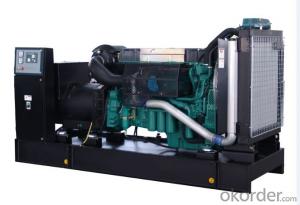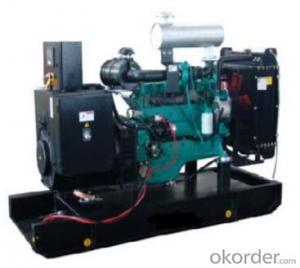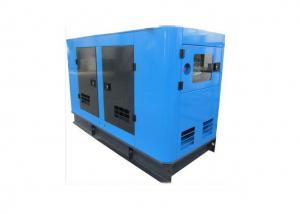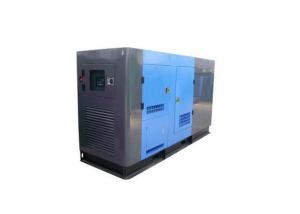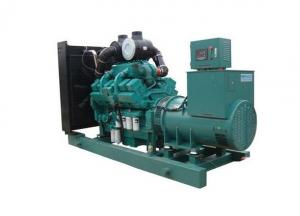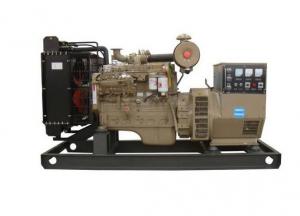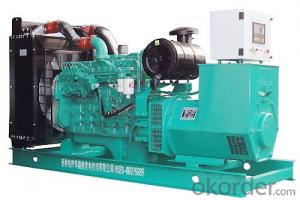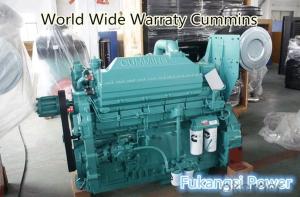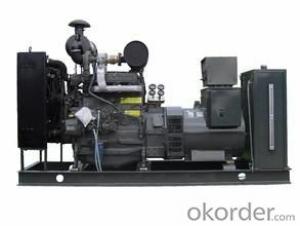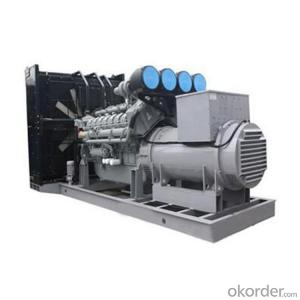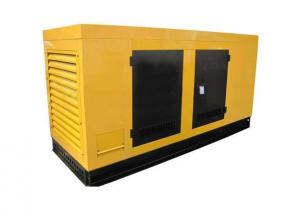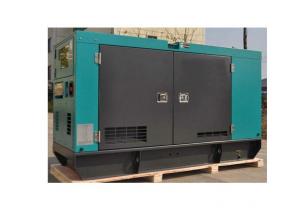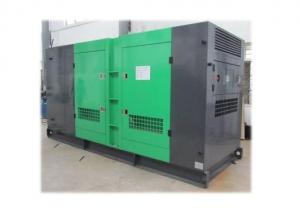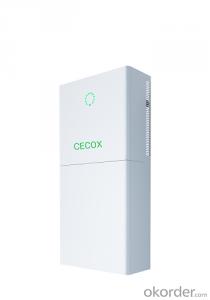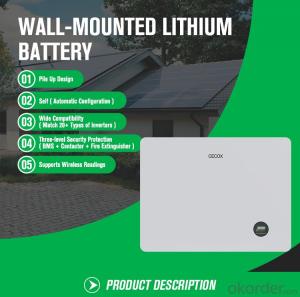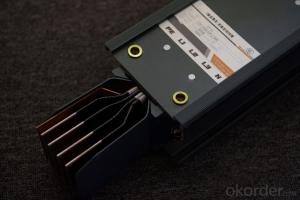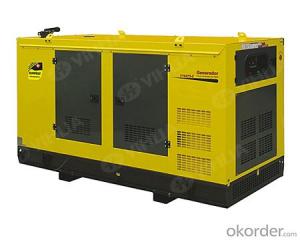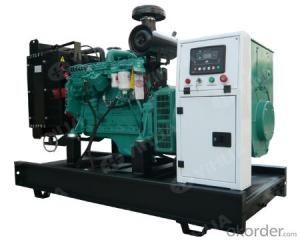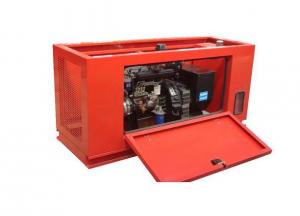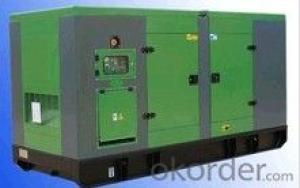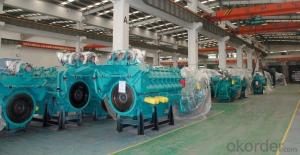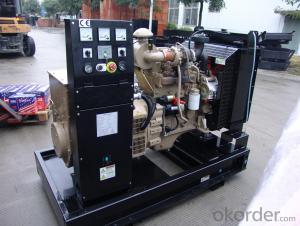Diesel Generator Cummins 200kw/250kva
- Loading Port:
- Shanghai
- Payment Terms:
- TT OR LC
- Min Order Qty:
- 1 unit
- Supply Capability:
- 100 unit/month
OKorder Service Pledge
OKorder Financial Service
You Might Also Like
Product Description
A diesel generator is the combination of a diesel engine with an electric generator (often an alternator) to generate electrical energy. This is a specific case of engine-generator. A diesel compression-ignition engine often is designed to run on fuel oil, but some types are adapted for other liquid fuels or natural gas.
Diesel generating sets are used in places without connection to a power grid, or as emergency power-supply if the grid fails, as well as for more complex applications such as peak-lopping, grid support and export to the power grid.
Main Product Features:
1. Engine (CCEC Cummins MTA11-G2)
2. Radiator 40OC max, fans are driven by belt, with safety guard
3. 24V charge alternator
4. Alternator: single bearing alternator IP23, insulation class H/H
5. Absorber
6. Dry type air filter, double fuel filter, oil filter, coolant filter
7. Main line circuit breaker
8. Standard control panel
9. Two12V batteries, rack and cable
10. Ripple flex exhaust pipe, exhaust siphon, flange, muffler
11. User manual
Product Specifications:
1. Manufacturer / Model: CCEC Cummins MTA11-G2, 4-cycle
2. Air Intake System: Turbo, Air/Air Cooling
3. Fuel System: PT type fuel pump
4. Cylinder Arrangement: 6 in line
5. Displacement: 10.8L
6. Bore and Stroke: 125×147(mm)
7. Compression Ratio: 16.1
8. Rated RPM: 1500rpm
9. Max. Standby Power at Rated RPM: 246KW
10. Governor Type: Electronic
FAQ:
Q1: What is Prime Power and Standby Power Rating?
A1: Prime Power (PRP): Prime power is available for an unlimited number of annual hours in variable load application, in accordance with GB/T2820-97(eqv ISO8528); A 10% overload capability is available for a period of 1 hour within a 12-hour period of operation. Standby Power Rating (ESP): The standby power rating is applicable for supplying emergency power for the duration of a utility power interruption. No overload, utility parallel or negotiated outage operation capability is available at this rating
Q2: How do we guarantee the quality of our products?
A2: We have established an advanced quality management system which conducts strict quality tests at every step, from raw materials to the final product.
Q3: How soon can we receive the product after purchase?
A3: Within three days of placing an order, we will begin production. The specific shipping date is dependent upon international and government factors, but is typically 30 to 40 workdays.
Q4: What is your after sales service?
A4: CNBM provides a full line of brand new and high quality products. Each and every unit is strictly factory tested. Warranty is according to our standard conditions: a, 15 months, counted on the day CNBM sold to the first buyer; b, One year after installation; c, 1000 running hours (accumulated); subject to the earlier one. Service and parts are available from CNBM or distributors in your location.
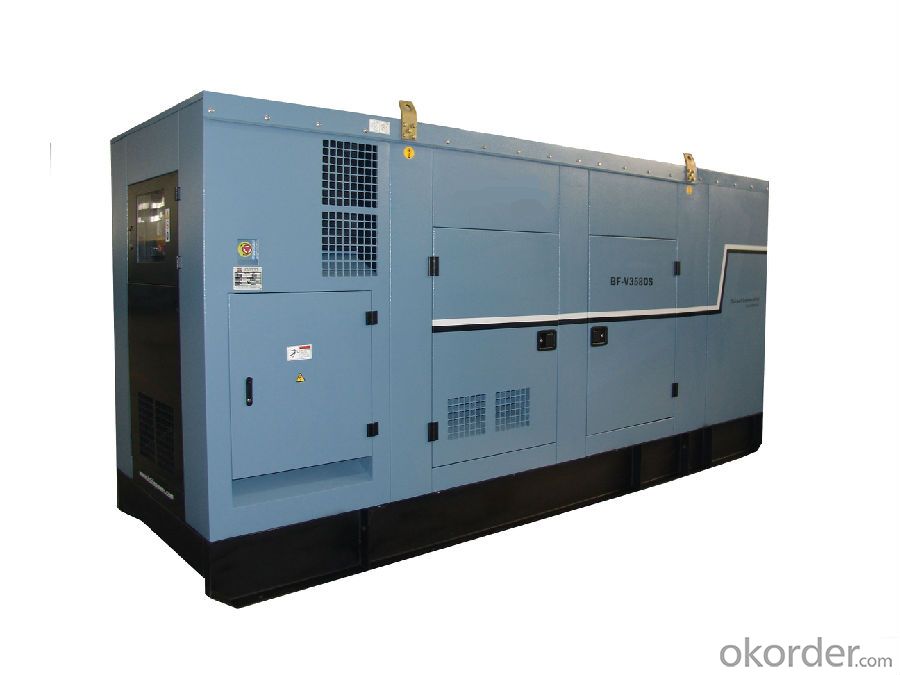
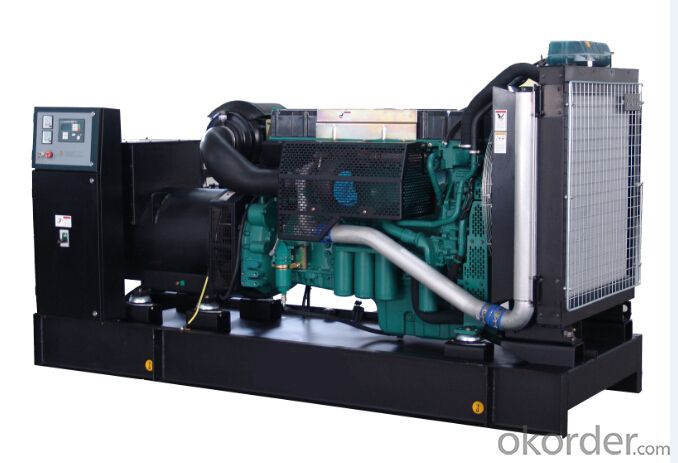
- Q:Diesel fuel savers are available today for diesel engines. These can be used for most diesel engines from school buses, big rigs, cranes, off-road equipment, marine use, and generators. If a mandate was passed to require these units to be installed tremendose sums of money could be saved by end users. For more info visit bestdieselsolutions
- Too bad they don't work. However a recent development has been the use of compressed natural gas in diesel engines. Until recently CNG could only be used in less efficient spark ignition engines like gasoline engines but it turns out that if the CNG is proceeded with a little diesel fuel, they can also be compression ignited.
- Q:I know that they could re-surface to re-establish a normal supply of air but what about when they were under attack and couldnt surface for long periods of time,wouldnt those engines use up a lot of the oxygen inside the sub?
- As others have stated the diesel engines could be used under water only with a snorkle system which wasn't very practical to do if you were indeed under attack. The have ports at the engine room to take in combustion air (oxygen) and to exhaust the combustion gases. The generator/motor was built inline with the drive shaft to the main propeller. As the diesel engine powered the prop it used the generator/motor to charge a bank of batteries. When the sub went under the diesel engines were shut off and the sub was powered by the battery bank. There is a huge switch station just to the rear of the engine room for this purpose.
- Q:Diesel Tank for a generator set
- The tank shall be a steel tank, for a generator set usually it is very simple, use steel galvanized sheets of 3 to 4 mm thick and must be welded joints
- Q:1. are backup generators constantly running, so when the lights go out to the people inside it seems like they have not?2. what do they run off?
- Back up generators are kept as stand bye.In hospitals and other important places they take start immediately when voltage drops in the main. They Run with petrol or diesel oil or other fuels/
- Q:I need a flowchart of the endergy conversions while popping popcorn. Example: Chemical energy to physical energy to nuclear energy, etc.
- Starting from the pop and moving towards the energy source The kinetic energy of the popped kernel converting to heat when the kernel comes to rest. The kinetic energy of the kernel from the explosion due to steam and the steam escapes with kinetic and heat energy that transfers to the ambient air as the steam condenses and then the droplets fall and convert kinetic energy to heat. Potential energy in the steam as it builds pressure inside the kernel The transfer of heat from the burner into the popping vessel to raise the temperature of the moisture inside the kernel to make steam Where did the energy come from to heat the burner? I will assume it is electrical energy created from a diesel generator peaker plant nearby There is resistance in the burner heating element that converts the electric current to heat. There is also resistance in the wires and transmission lines and transformers that carry the electricity from the power plant to the burner, which is all lost to heat. The electricity is created from a generator where there is an wire-wound aperture spinning in the presence of a magnetic field. The kinetic energy of the aperture gets converted to the electrical energy and sent out on the transmission lines. The kinetic energy of the aperture is created inside a diesel engine by connecting it to the crank shaft - some friction losses due to bearing surfaces. The kinetic energy of the crank shaft is created from an explosion inside a piston. The explosion creates an expansion of gases that push the piston, which spins the crank shaft. Some of this energy is lost to heat dissipatin and friction. The explosion was from the conversion of the chemical energy in the diesel fuel to heat. The pressure in the piston caused the fuel and oxygen mixture to explode. How's that? j
- Q:HI, I'm a college student Marine EngineeringI don't know the procedures of*pre-start up*start-up*stoppingof an emergency AC Generatorplz. help :)I'm going to monitor during operation that's why I want to know all of thatplease response as soon as possible.
- Before check all fluid levels and turn off all breakers before starting or stopping!
- Q:Fuel tank is for generator and its a day tank the size of the tank filling line is 2
- So you can empty the tank. If the tube ends near the top, the generator will only be able to pull fuel until the level drops below the bottom of the inlet pipe.
- Q:A friend and I have been tossing around ideas about the future of the human race, and are coming more and more to the conclusion that we're all going to hell in a handbasket.Virtually ALL religious writings make reference to pockets of humans living past Armageddon even though civilization itself is pretty much gone. Humans will continue on the level we were on several hundred years ago, in small farming communities, doing most work by hand. The problem is to survive long enough to establish such communities.MRE's and other long-life foods are fine, but pretty expensive. If you're talking about feeding hundreds or thousands of people for several years, we have to get back to something like dried beans and rice. The government does it. How?What is the best way to store grains and beans? Metal drums rust. Plastic drums are succesptible to rodents. Are silo's necessary? If so, what is the LONGEST rice and beans will last? Years? A decade?What do you think?
- Well, if you're serious about it, you only need the rice and beans for a year or two. You need seeds, though, and a good book on farming. You and your friend can get a pretty good farm going on your own and grow more food than you need by yourselves while you wait for others to join you. You should look up sustainable farming and research into what the Native Americans were doing before we got here. There's no sense in starting up a new civilization with the same old bad practices of the one that just fell. You could also get some books on edible plants in your area and the areas around it. Global warming and pollution may kill off a lot of the plant life, but there will always be the perfectly edible dandelion. Anything that kills off all the plants is also going to kill you, so you might as well know how to supplement your diet with fresh stuff. With your surfeit of food in the new landscape, you'll probably want to invest in walls and maybe guns. For storage, you could always go old-fashioned. The link below has a lot of great resources for the pre-Industrial Revolution minded, but it also tells you how to make storage bins. You could also look up bell-shaped storage pits, which are another favorite method of storage, and one that was remarkably effective. Heh, I've thought about this a lot, too. Can I join your group if disaster finally falls?
- Q:As the generator is for emergency, so it stopped for long time and only run for preventive maintenance, so its not accomulate running time, what is the standard to evaluate the need for maintenance ?
- First make sure the fuel is fresh periodically. Old fuel deteriorates makes it hard it start and run. Second check the oil see if it is clean, check the oil filter too. Third check the fuel filter, change once a year if not used because of bad / old fuel. Forth Check the out put of the engine / voltage / oil pressure / amperage / operating temperature / current fuses / transfer switches are working properly. Listen and make sure the engine is running smooth, no misses. Should be good to go then.
- Q:I heard about the diesel electric concept from a friend and he didn't have a lot of details, but from what he knew it sounded really interesting. I was wondering if someone could give me some details on to what this new technology really is, and how it works. Thanks!
- Well. first insight. If by new you mean the 1940s you are dead nut. Pretty ALL of the trains you see are diesel electric and have been since the 1950s. Here's how any Fuel-electric system works: You have a fuel. In the case of a diesel engine your fuel is Any stable liquid that burns. You burn that fuel in a chamber of some kind such that you create a physical motion. Pistons and cranks is the rule of thumb. You take that motion usually in the form of rotation, and you use it to move a magnet past a coil of wire. A magnet moving past a coil produces electricity, which you can now use to drive an electric motor, or charge batteries, or play Youtube or whatever. Diesel engines have a huge advantage over traditional internal combustion engines, (although diesel came first by like 12,000 years :). They require no spark, and they can burn darn near anything. The whole concept of a Diesel engine is that when you compress something, it heats up. If what you are compressing is flammable, and you compress it enough, it will ignite and burn. This turns out to be exactly true, and why you can run your 1982 VL Golf Diesel on a bottle of corn oil in a pinch.
1. Manufacturer Overview |
|
|---|---|
| Location | |
| Year Established | |
| Annual Output Value | |
| Main Markets | |
| Company Certifications | |
2. Manufacturer Certificates |
|
|---|---|
| a) Certification Name | |
| Range | |
| Reference | |
| Validity Period | |
3. Manufacturer Capability |
|
|---|---|
| a)Trade Capacity | |
| Nearest Port | |
| Export Percentage | |
| No.of Employees in Trade Department | |
| Language Spoken: | |
| b)Factory Information | |
| Factory Size: | |
| No. of Production Lines | |
| Contract Manufacturing | |
| Product Price Range | |
Send your message to us
Diesel Generator Cummins 200kw/250kva
- Loading Port:
- Shanghai
- Payment Terms:
- TT OR LC
- Min Order Qty:
- 1 unit
- Supply Capability:
- 100 unit/month
OKorder Service Pledge
OKorder Financial Service
Similar products
New products
Hot products
Hot Searches
Related keywords
